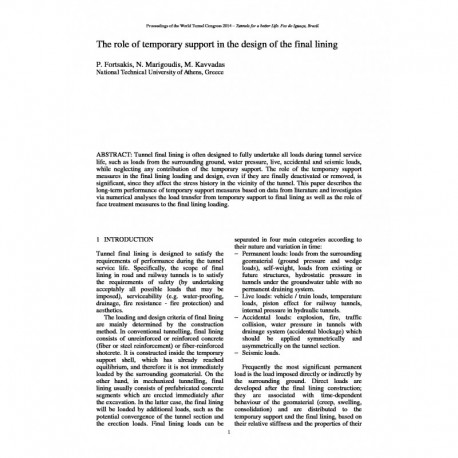Cart
0
0
No document
0,00 €
Total
Document successfully added to your shopping cart
Quantity
Total
There are 0 items in your cart.
There is 1 item in your cart.
Total documents
Total shipping
To be determined
Total
Search & filter
Search for a publication
Search & filter
Viewed documents

The role of temporary support in the design of the final lining
pap212
M. Kavvadas / P. Fortsakis / N. Marigoudis
Tunnel final lining is often designed to fully undertake all loads during tunnel service life, such as loads from the surrounding ground, water pressure, live, accidental and seismic loads, while neglecting any contribution of the temporary support. The role of the temporary support measures in the final lining loading and design, even if they are finally deactivated or removed, is significant, since they affect the stress history in the vicinity of the tunnel. This paper describes the long-term performance of temporary support measures based on data from literature and investigates via numerical analyses the load transfer from temporary support to final lining as well as the role of face treatment measures to the final lining loading.


